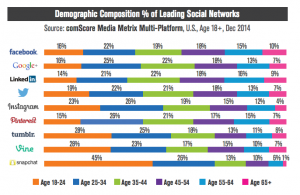Technology does not run an enterprise; relationships do. – Unknown
Would you propose marriage on a first date?
No. (Well, let’s hope not.)
If you delve into wedding planning on your first date, you’re jumping the gun. You fast-forwarded from the getting-to-know-you phase to saying, “I do.”
It’s the same thing if your company is focused first on making the sale rather than building relationships with customers.
If your company treats customers like revenue targets instead of human beings, those customers aren’t likely to stick around for a second date, much less a long-term relationship.
Humans buy from humans. Enable relationships and growth will follow.
I’m excited to see that new strategies emerging in the post-COVID market reflect a shift toward more relational initiatives. But I don’t believe they’re going far enough to put human relationships at the center.
Humans Are the Center of Your Organization
Saying hello doesn’t have an ROI. It’s about building relationships. – Gary Vaynerchuk
Some thought leaders have been talking about the shift from sales enablement to revenue enablement as the key to thriving in today’s marketplace. The brilliant minds at Sales Benchmark Index connect revenue enablement with the framework behind Harvard Business School professor Hirotaka Takeuchi’s knowledge-based strategy (KBS), which I find intriguing.
The KBS approach revolves around human interaction. Humans are the center of an organization, and employees must interpret the present moment and experiences in a social context to create the desired outcome in the future.
The purpose of an organization, according to this strategy, is to improve the common good — not just the company’s bottom line. To create a better future for employees, customers, stakeholders and all of society.
We humans gain knowledge from the experience of interacting with one another. Just like in a dating situation, everyone in an organization — not just salespeople — needs to read the situation and consider the social context of the experience. This applies to everything from marketing to new leads to making a sales call to responding to a complaint.
Looking at enablement from the point of view of human experience and knowledge gain, I believe the underlying thread is relationship — not revenue.
What’s really missing from C-suite initiatives is relationship enablement.
Relationship enablement extends the responsibility for relationship building to all areas of an organization. It breaks down organizational silos and connects the company to customers.
What Reason Do You Give Them to Choose You?
If you believe business is built on relationships, make building them your business. – Scott Stratten
What are you doing to give a customer reason to choose you over all the other options they have? How do you make them feel heard, understood and valued as human beings?
Good human relationships can directly improve a company’s bottom line because they are longer-lasting and more resilient than simple transactional relationships.
Here are a few things I’ve learned about business relationships over the last 20 years as I’ve worked with companies in the B2B tech space.
- A “no” now doesn’t mean “no” forever
- Long-term relationships are the foundation of long-term business growth
- A relationship cannot exist without conversation
So how do you build strong relationships with your leads and customers?
The right place to start is an organization-wide commitment to relationship enablement.
Within this context, high-quality content that serves the audience in a meaningful way can go much further to keeping the conversation going and building a stronger relationship over time.
When I help my clients determine their content marketing strategy, the very first thing we do is to take a deep dive to truly understand who we’re writing to. We determine the best way to connect with prospects, how your target audience is trying to solve their problems, and how your best customers think. We learn what your customers need and what their pain points are.
We learn who your customers are as human beings.
We get the social context.
Only then can we create targeted content that’s highly relevant and genuinely helpful to the customers you want to serve.
Relationship Enablement Requires Being Human — Even in Your Marketing and Sales Content
Relationship enablement requires a mindset shift — a shift in focus from how to make the sale to how to build relationships. A human relationship (versus a transactional relationship) is more likely to survive market shifts, negative reviews, and even a bad customer experience.
Your content can humanize your brand. It’s part of the experience you offer your customers. Robotic, overly technical content has its place to share information about specific products and offerings, but to build relationship, embrace your humanity.
As with Takeuchi’s KBS approach, it’s this social context that gives us the experience to create better outcomes for everyone.
Conversation (i.e. two-way dialog) is a critical thread in the fabric of human relationship. Leave the robot-speak to chatbots. Your content is an ongoing conversation your company is having with customers, so make it count.
Business & Finance Articles on Business 2 Community
(43)




